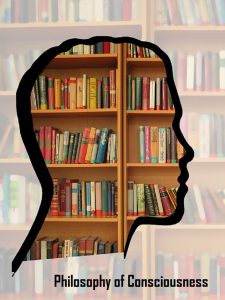
I decided to fill in this gap.
Part 1. Cognizable information
Absolutely all objects, processes and phenomena in the Universe, from “elementary particles” to the largest star clusters, from bacteria to human beings, from all kinds of radiation to the creations of human hands, in fact are carriers/media of various information (that could be cognized/perceived/read) about their origin, activity, evolution, “life path”, current state, etc. in the smallest detail. This “cognizable information” can tell a lot to someone who is able to “reveal”, “perceive” and “read” it.
Example #1: Light coming to us from a distant star is a valuable source of information for astronomers and can help solve many mysteries about the nature and origin of the universe. Analyzing the spectrum of light can provide information about the distance to the star and its speed, as well as the composition of the gases in the galaxy. The detection of chemical elements in the light spectrum, which may be associated with life, may indicate the presence of life on planets in that star’s system. This light can tell us about the star itself, its age, size, temperature, and composition. Changes in the brightness of the star can indicate the presence of planets passing in front of it…
Example #2: An artist’s painting from many centuries ago can tell researchers a lot about the culture and history of the time when it was created. It can contain information about the social, economic, and political life at that time. Also, it may reflect lifestyle, fashion, structure of the society, and even behavior of the people depicted in it. A painting can also show the architecture, landscape, and technological advances of the time. The size of the painting, the type of paint, the chemical composition of the paints, the material of the canvas, the author’s signature on the painting, etc. are also of interest to researchers.
Example #3: A handwritten letter can provide a variety of information for different subjects: for the addressee – it’s the content itself; for the graphologist – it’s the handwriting, containing information about the author of the letter; for the forensic scientist – it’s fingerprints on the letter, the composition of the ink and the paper the letter was written on; etc.
But… In the process of cognition some subjects can “read” this or that information, while others cannot do this for any of the reasons (lack of appropriate education, lack of necessary knowledge and experience, lack of desire to cognize anything, malfunction in functioning of the body and its receptors, and so on). Therefore, as a rule, people call “a source of information” only those objects, from which they are able to “read” what these objects “carry“.
Example #4: If a researcher of the Mumba-Yumba tribe does not know their language, he will not understand a single word or “catch” the slightest meaning in their speech. Everything uttered by the tribe will be mere noise to him.
Example #5: One subject (hunter) is able to “read” animal tracks, another (ornithologist) is able to “read” bird voices, a third (programmer) is able to “read” program code in a programming language he knows, a fourth (translator) is able to “read” texts in various world languages, a fifth (radio engineer) is able to “read” signals coming from radio stations to radio receiver using devices that people have specially created for this purpose…. and yet many people have no idea about the very possibility of “reading” this information…
Accordingly, it can be stated that:
- “Cognizable, or readable, information“ (rus. сведения, ukr. відомості) is everything that serves as a basis, on which a subject is able to characterize something.
- “Cognizable information“ does not exist by itself; it does not exist outside of the object – its carrier (i.e., medium)!
- “Cognizable information“ is, by default, unknown to the subject, but could potentially be cognized by him.
- “Cognizable information“ is an integral part of any object in the Universe, which the subject is able to perceive.
- Creators of “cognizable information“ are Creators of objects or processes, i.e., Nature, Beings, as well as human-made devices.
- A carrier, or a medium, is a conventional name of an object from the body of which a subject is able to perceive, or “read” “cognizable information“, which the object “carries on itself” by means of any physical effects.
- The medium of “cognizable information“ is the conventional name for the carrier “carrying” the “cognizable of information”, which is unknown to the subject by default.
- The medium of information is the conventional name for the medium “carrying” the information the subject has created.
- Characterizing (describing, outlining, qualifying…) is identifying and describing characteristic features and properties of something or someone.


